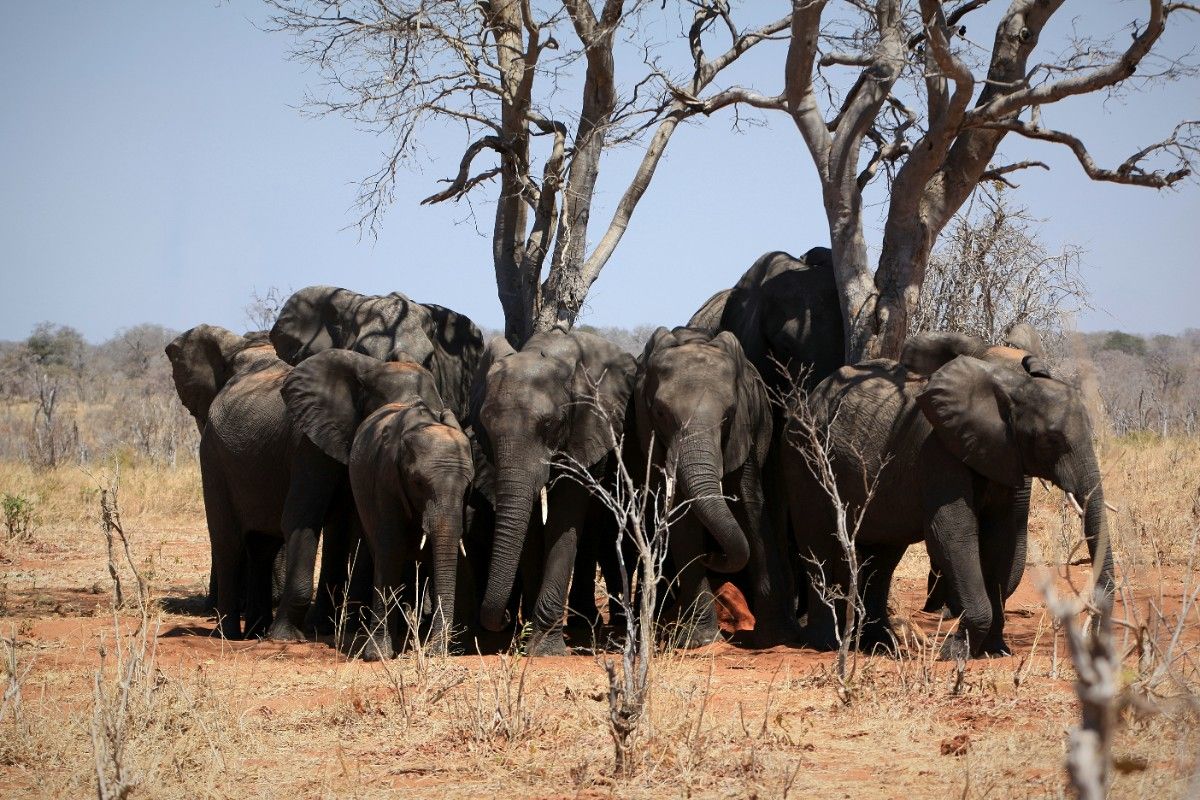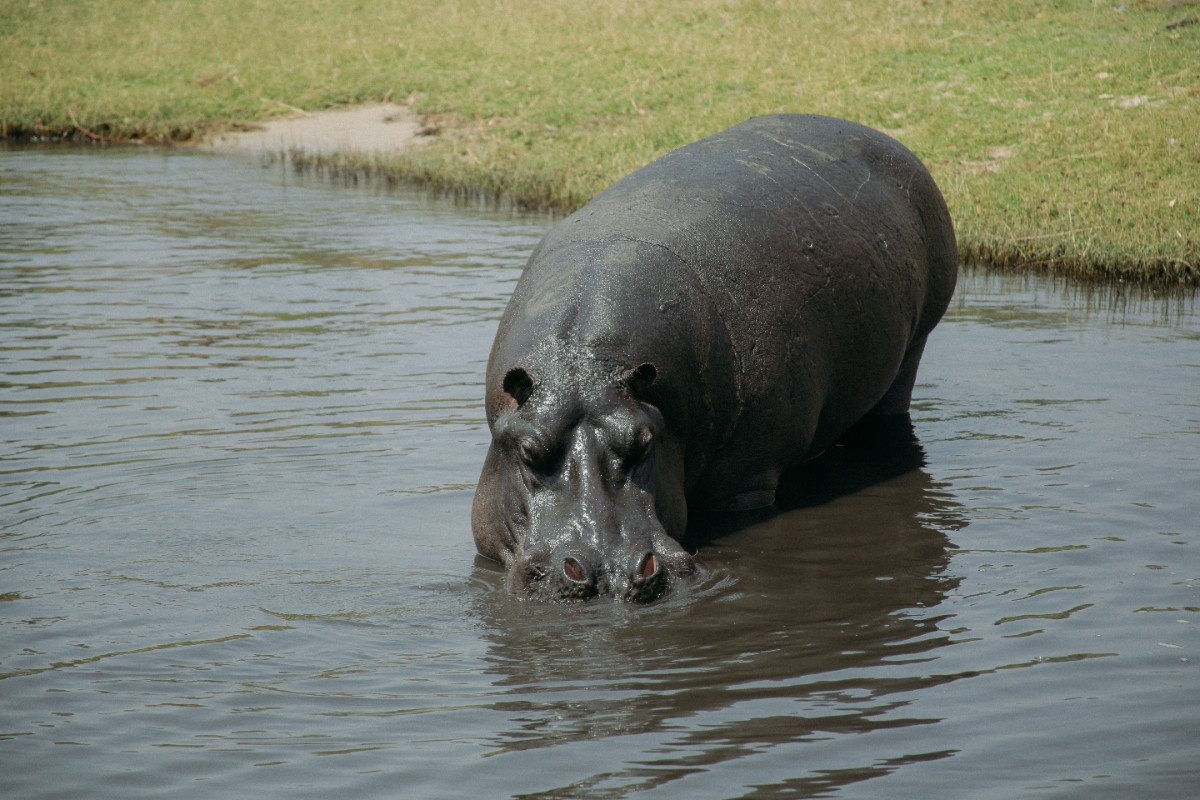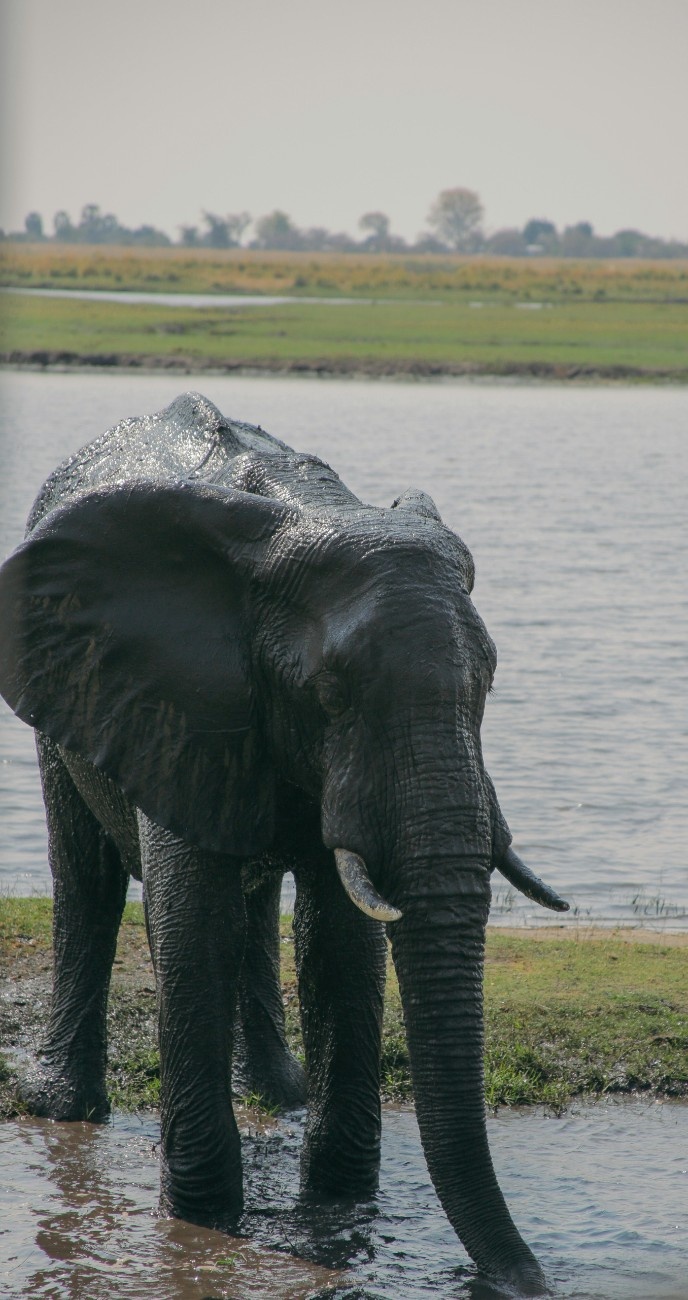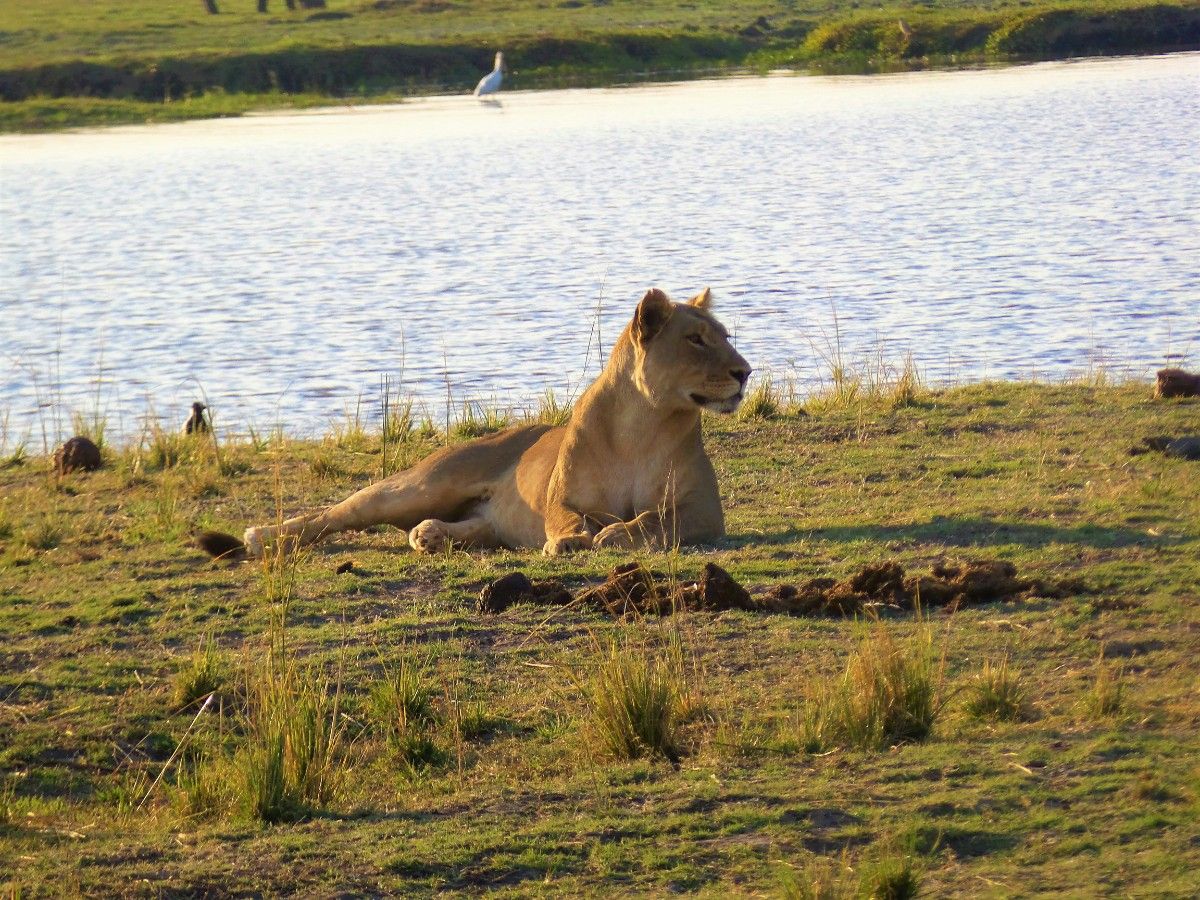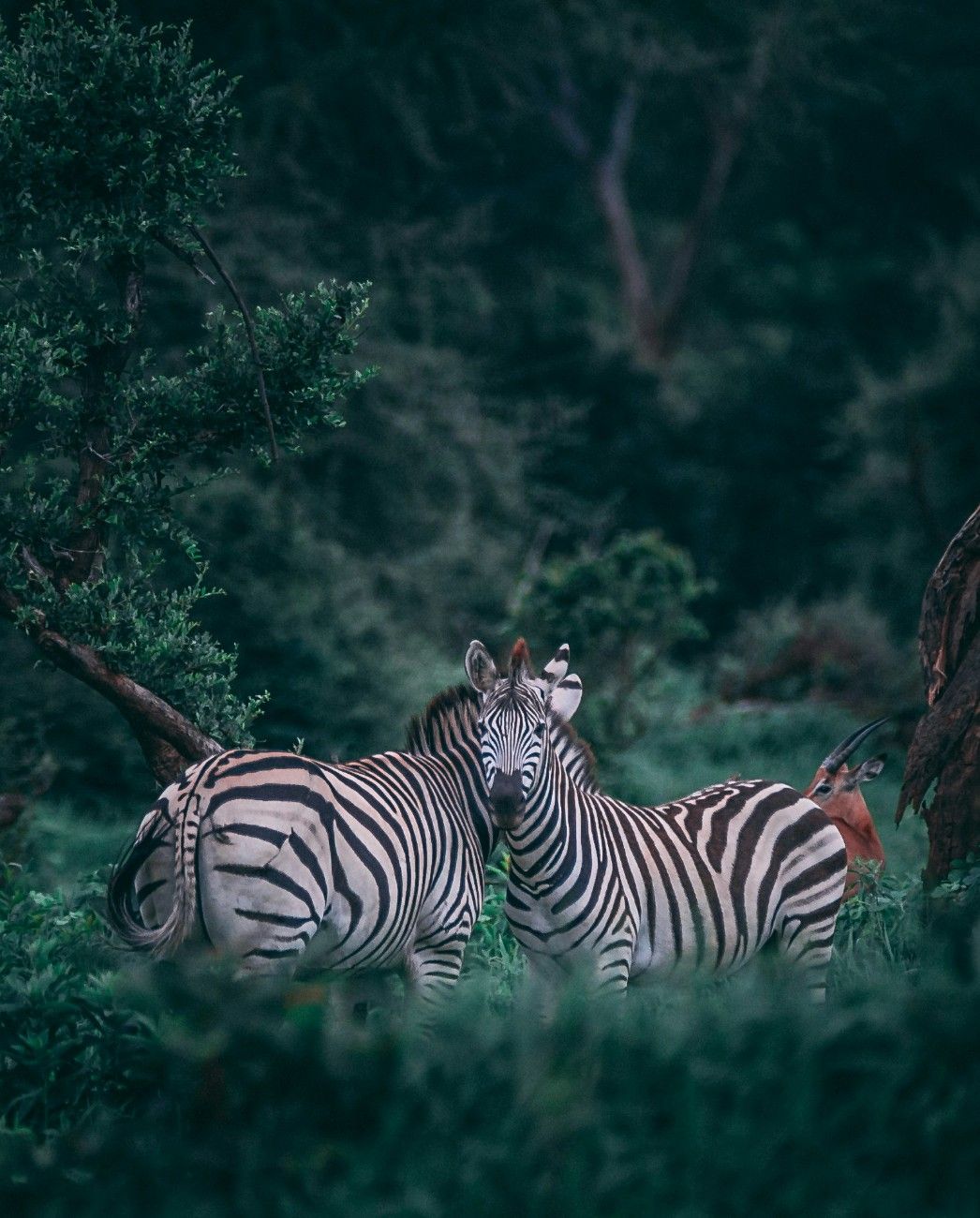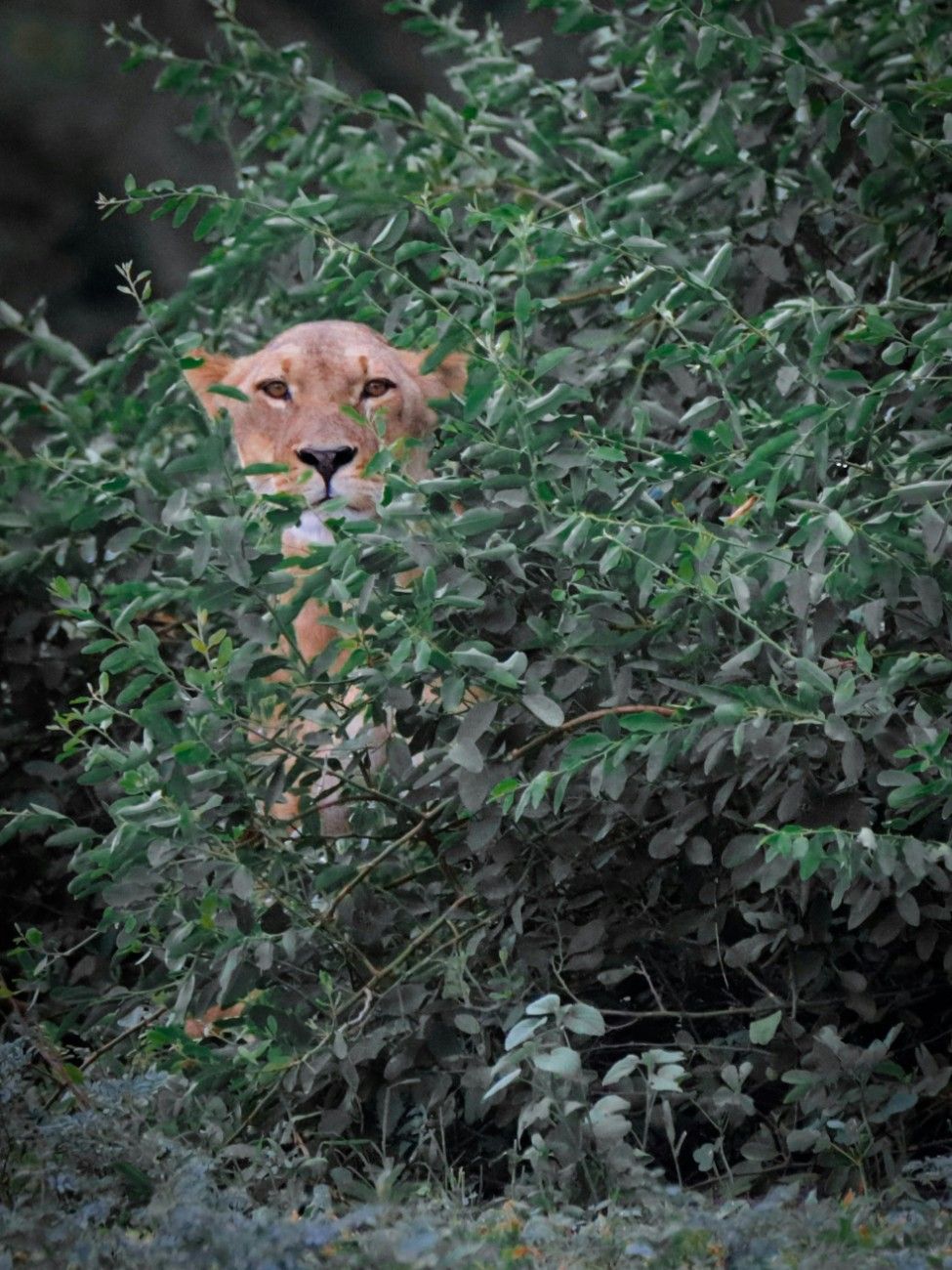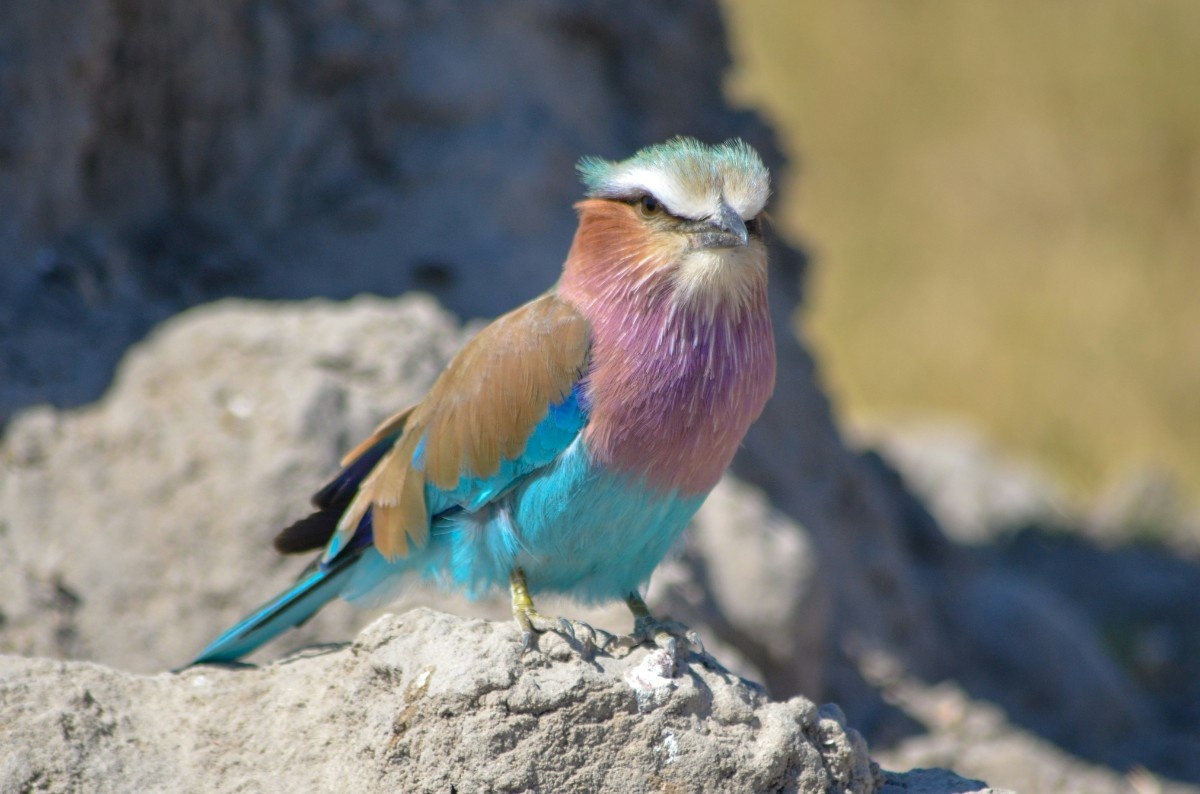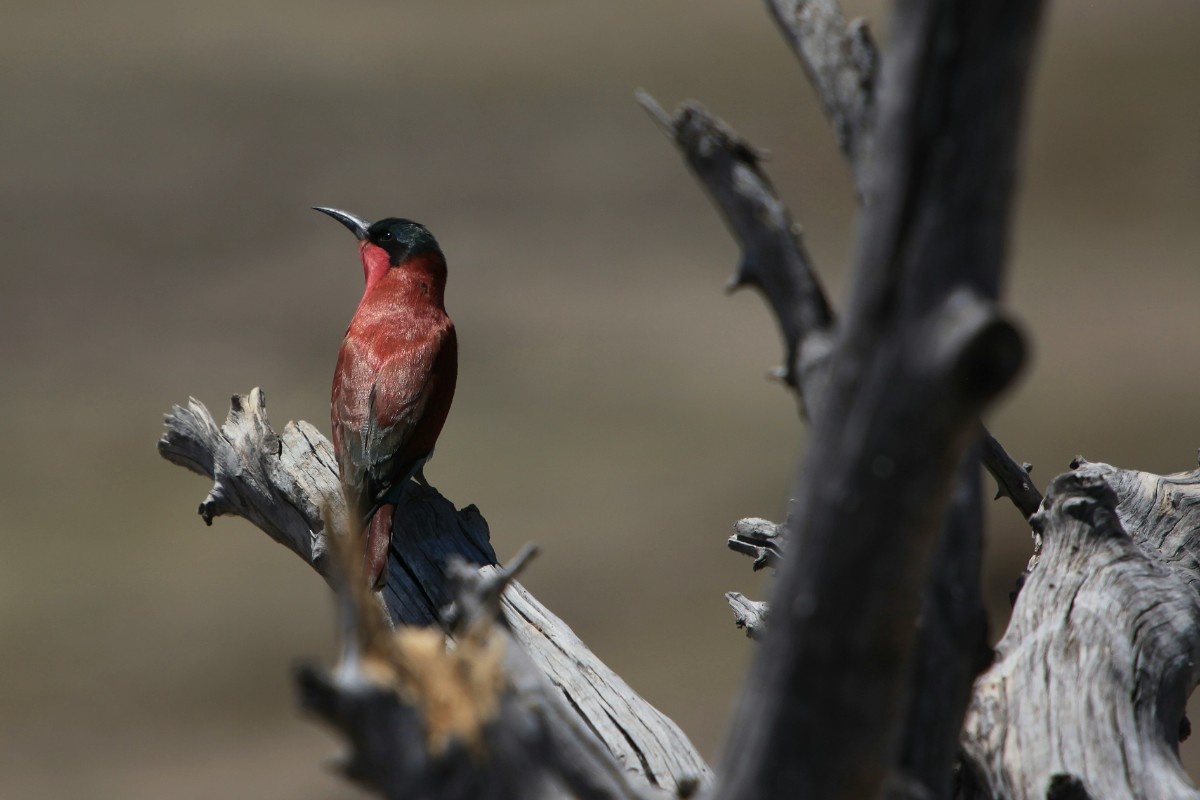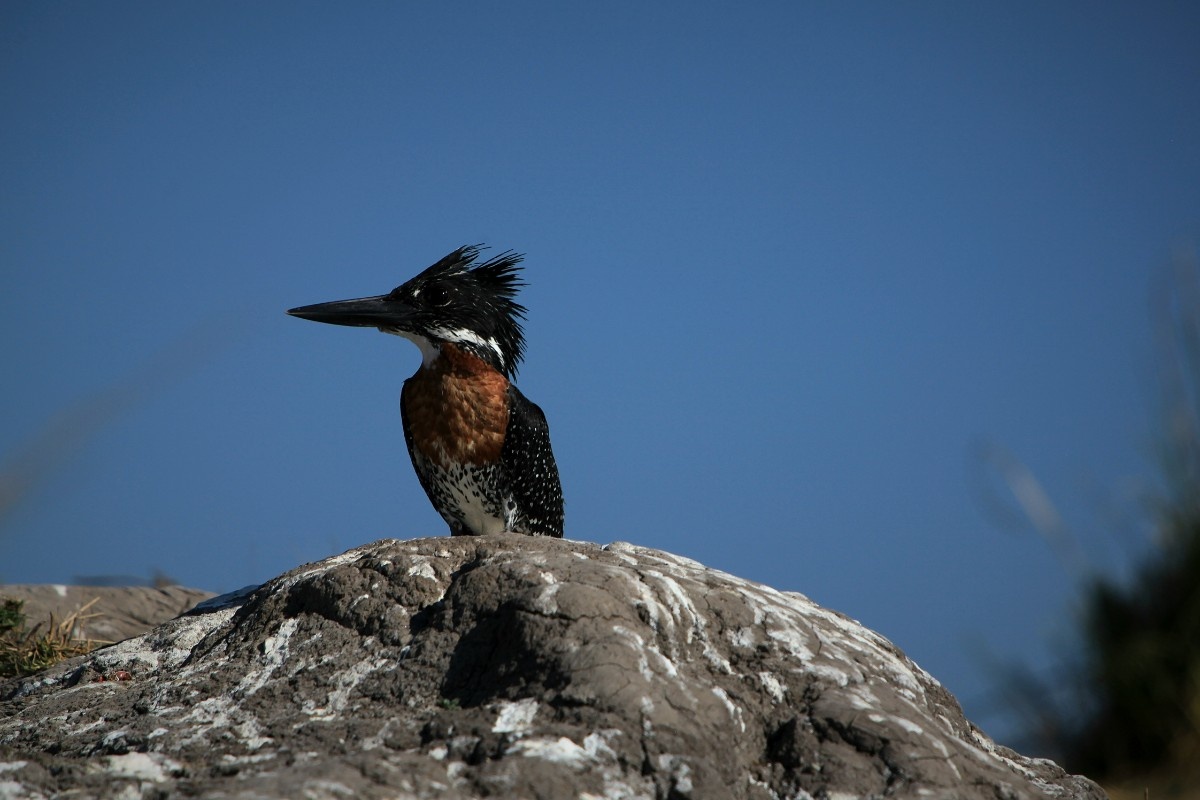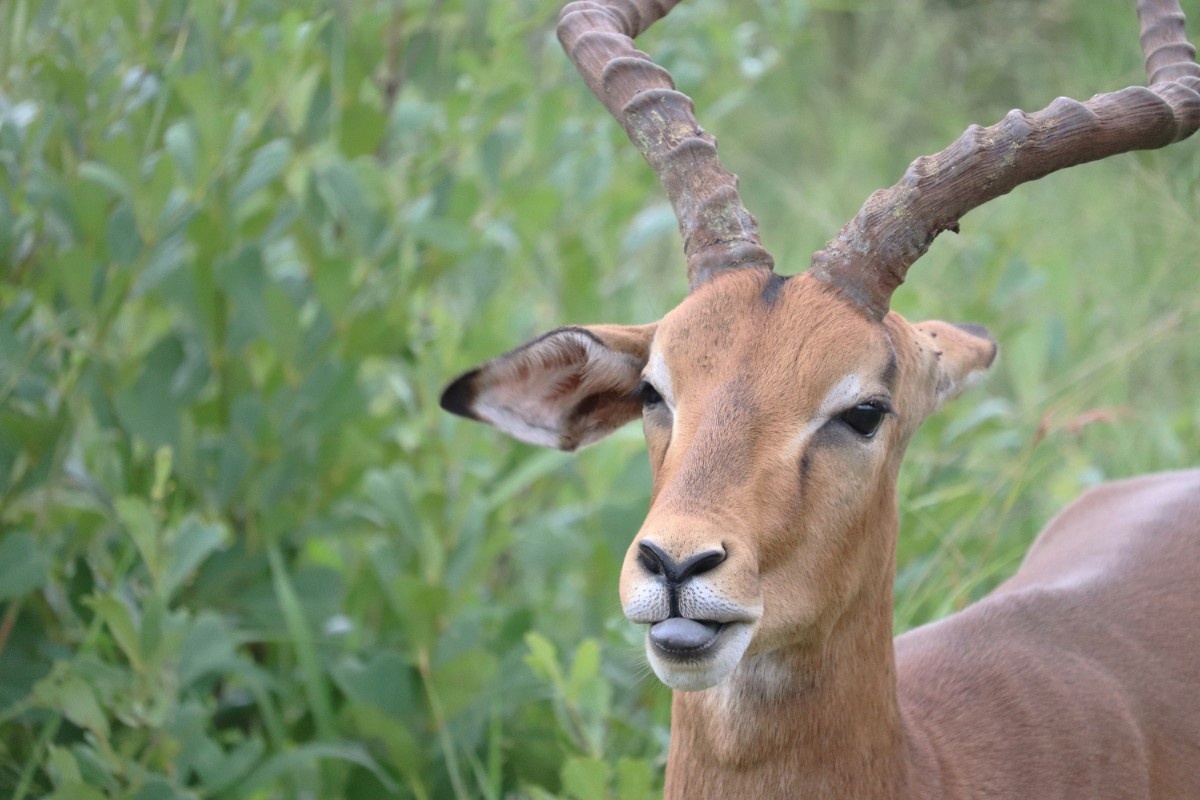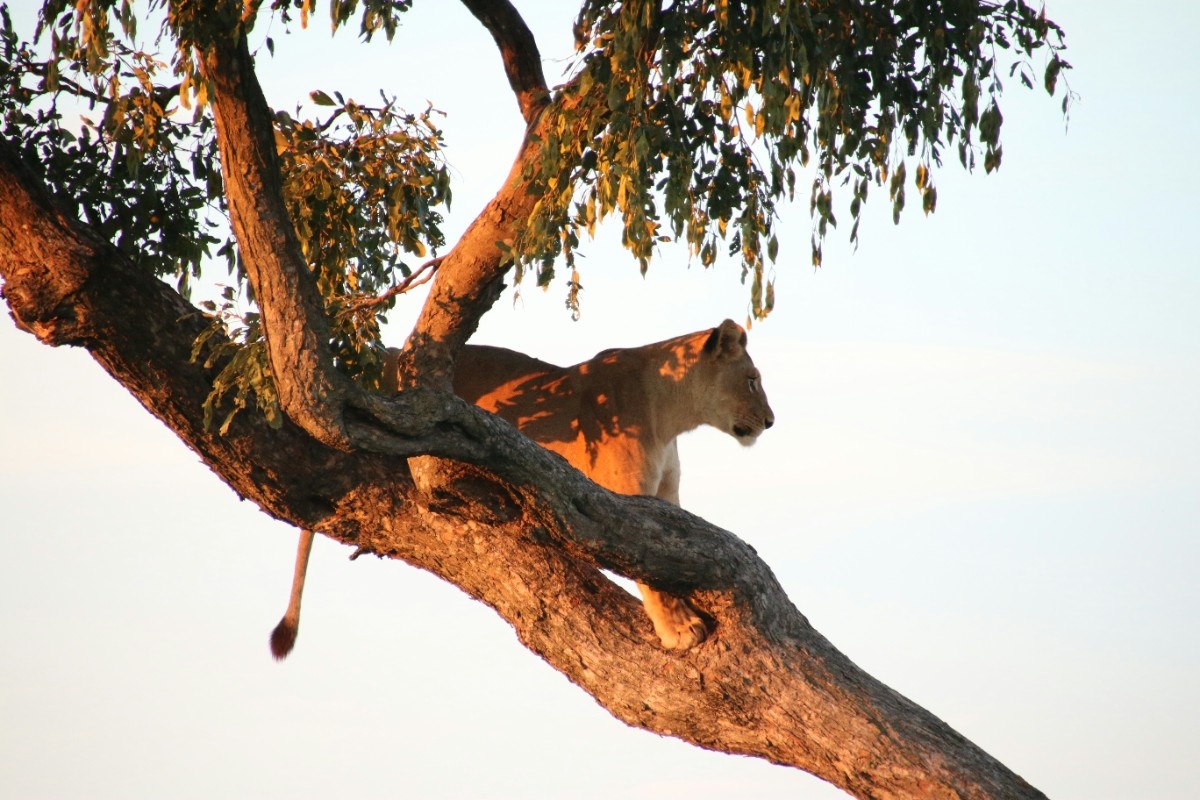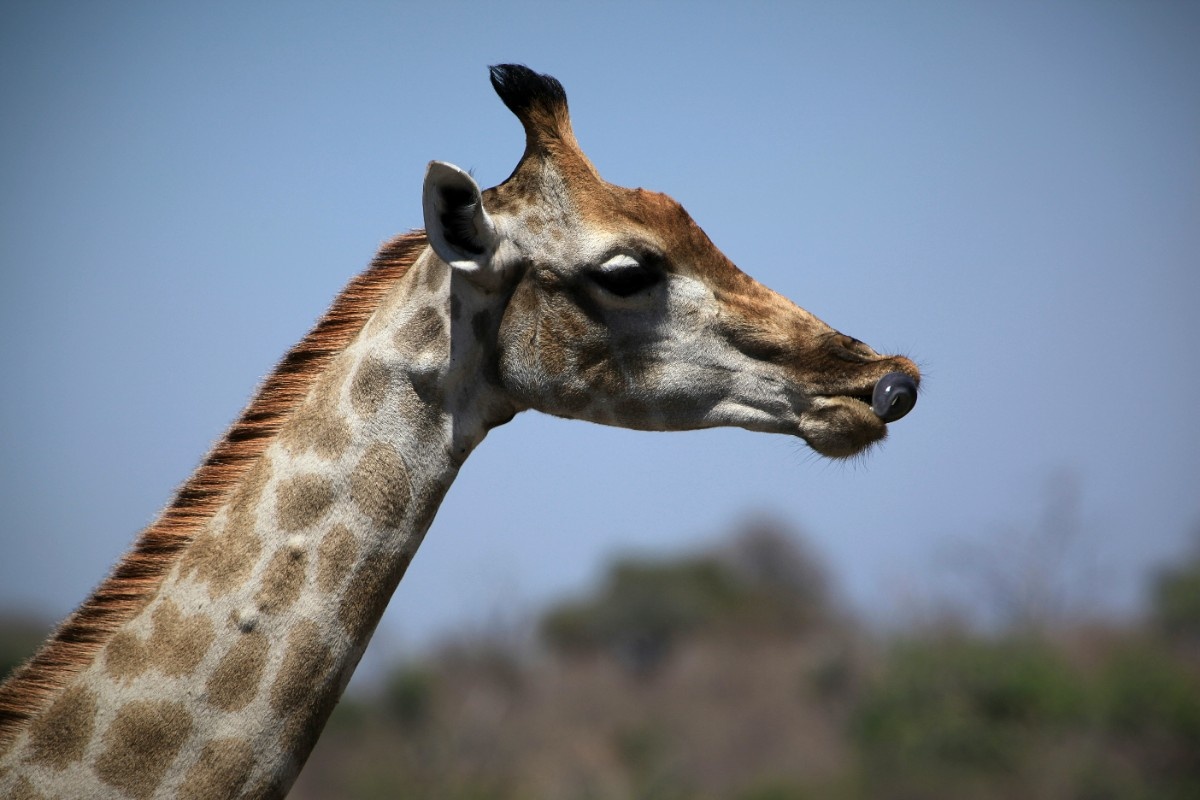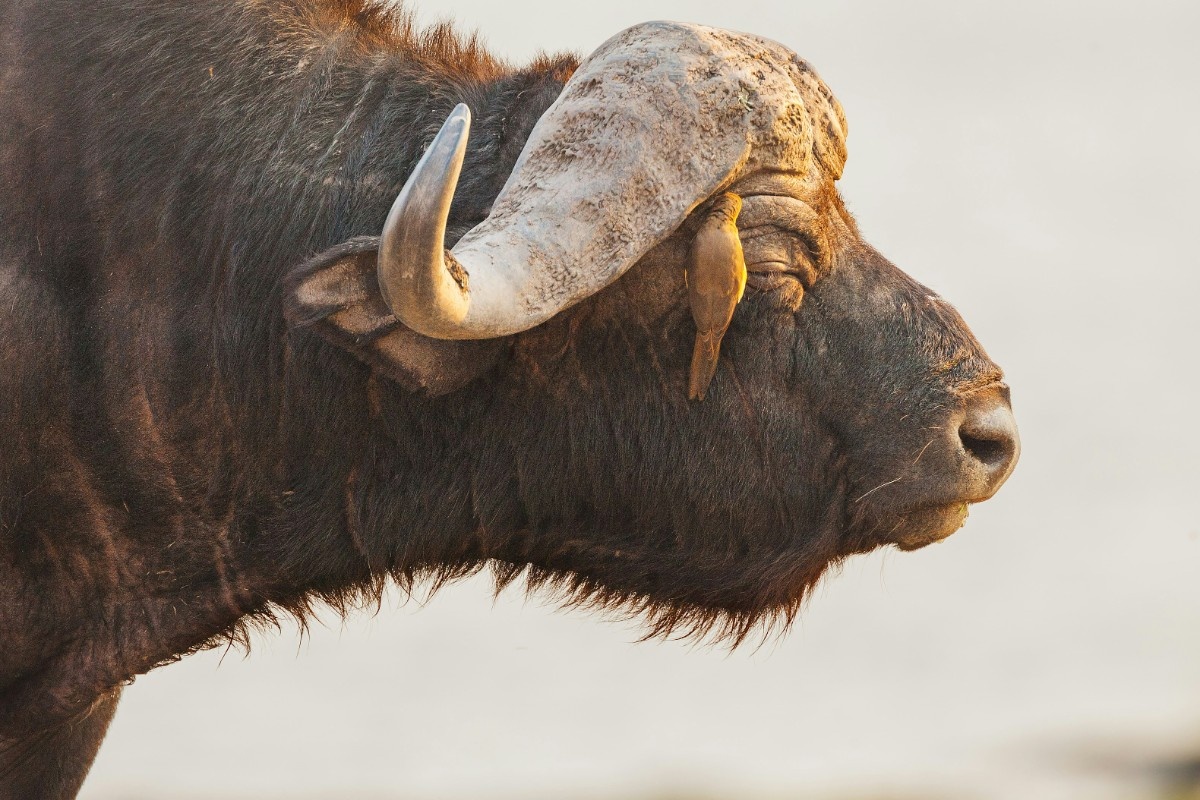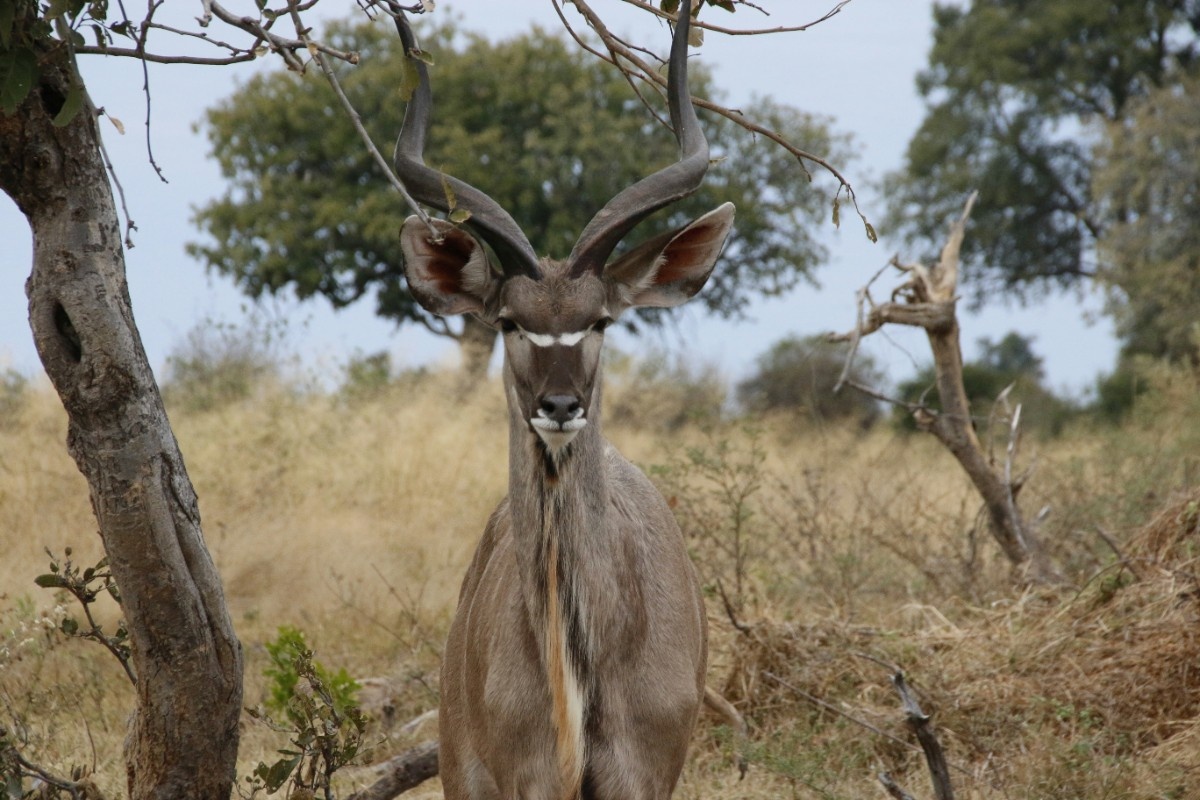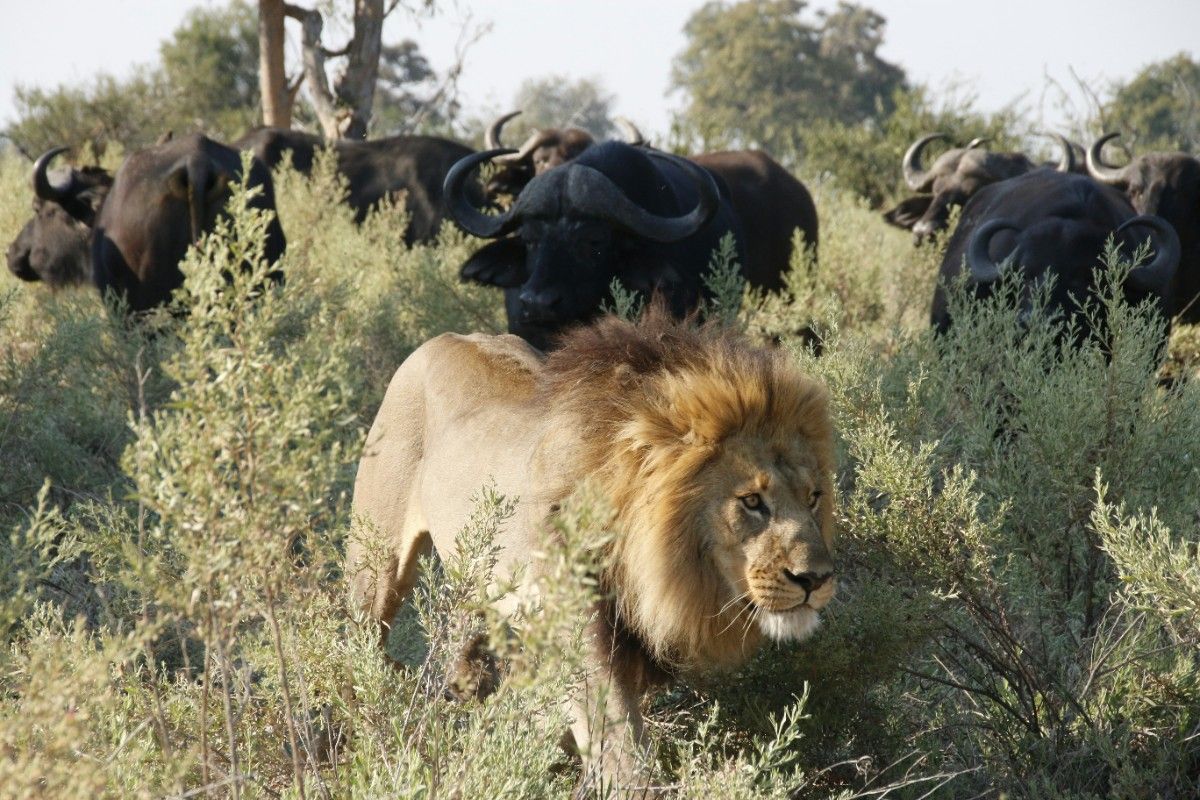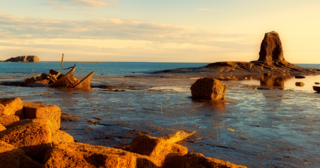Discovering Chobe National Park
An Introduction to Chobe National Park
Chobe National Park, situated in the northern part of Botswana, is a wildlife enthusiast's paradise. Established in 1968, this vast expanse of untouched wilderness covers an impressive 11,700 square kilometres, making it one of the largest national parks in the country. The park's name is derived from the majestic Chobe River, which serves as a vital water source for the diverse array of flora and fauna that call this region home. As a visitor to Chobe National Park, you will be enchanted by its unparalleled beauty, where lush landscapes and abundant wildlife converge to create an unforgettable experience.
The park's location in northern Botswana, bordering Namibia, Zambia, and Zimbabwe, adds to its allure as a prime destination for safari enthusiasts. Chobe National Park is conveniently accessible from the nearby town of Kasane, which serves as a gateway to this natural wonderland. Visitors can reach Kasane by road, air, or even a short boat ride from the neighbouring countries, making it a well-connected hub for those eager to explore the park's wonders.
The Diverse Ecosystems of Chobe National Park
One of the most remarkable features of Chobe National Park is its diverse ecosystem, which encompasses riverine forests, floodplains, grasslands, and woodlands. This varied landscape provides a rich tapestry of habitats that support an incredible array of wildlife species. The park is particularly renowned for its impressive elephant population, which is estimated to be one of the largest in Africa. These gentle giants roam freely through the park, often congregating along the banks of the Chobe River to quench their thirst and cool off in the refreshing waters.
In addition to the elephants, Chobe National Park is home to a wide range of other iconic African species. The park's savannahs and grasslands provide a haven for vast herds of buffalo, zebra, and various antelope species, such as the majestic sable and the graceful kudu. Predators like lions, leopards, and wild dogs also thrive in this wilderness, adding an element of excitement and adventure to any safari experience.
The Chobe River: A Lifeline for Wildlife
The Chobe River, which forms the northern boundary of Chobe National Park, is a defining feature of the park's ecosystem. This perennial river is a lifeline for the park's wildlife, providing a constant source of water and sustenance throughout the year. During the dry season, when water is scarce in other parts of the park, the Chobe River attracts large concentrations of animals, making it a prime spot for wildlife viewing.
The river itself is a hub of activity, with hippos, crocodiles, and a variety of aquatic birds calling its waters home. Visitors can embark on boat safaris along the Chobe River, getting up close to the animals that come to the river's edge to drink, bathe, and socialise. These river safaris offer a unique perspective on the park's wildlife and provide a refreshing break from the heat of the day.
Exploring the Wonders of Chobe National Park
There are numerous ways to explore the wonders of Chobe National Park, each offering a different perspective on the park's landscapes and wildlife. Game drives, conducted in open safari vehicles, are a popular way to traverse the park's diverse habitats and encounter its iconic species. Guided by knowledgeable rangers and trackers, visitors can venture into the heart of the wilderness, learning about the intricate relationships between the park's flora and fauna.
For a more intimate and immersive experience, visitors can opt for a walking safari. These guided walks, led by armed rangers and expert guides, provide an opportunity to explore the park on foot, discovering its smaller wonders and gaining a deeper appreciation for the interconnectedness of its ecosystems.
Chobe National Park is also a haven for birdwatchers, with over 450 species recorded within its borders. From the majestic African fish eagle to the colourful lilac-breasted roller, the park's avian inhabitants are a delight to observe and photograph. Specialised birding safaris, led by experienced ornithologists, cater to those with a keen interest in the park's feathered residents.
No matter how you choose to explore Chobe National Park, one thing is certain – this incredible wilderness will leave an indelible mark on your heart and mind, inspiring a deeper appreciation for the beauty and fragility of the natural world.
The Best Time to Visit Chobe National Park
Seasonal Changes in Chobe National Park
When planning a visit to Chobe National Park, it's essential to consider the seasonal changes that occur throughout the year. The park experiences two distinct seasons – the dry season, which runs from May to October, and the wet season, which extends from November to April. Each season offers unique opportunities and challenges for visitors, and understanding these differences can help you make the most of your safari experience.
During the dry season, the park's vegetation thins out, making wildlife more visible and easier to spot. The lack of rainfall causes animals to congregate around the remaining water sources, particularly the Chobe River, which acts as a magnet for thirsty elephants, buffalos, and other herbivores. This concentration of wildlife makes the dry season an ideal time for game viewing, as the chances of encountering large herds and iconic species are significantly higher.
In contrast, the wet season transforms the park into a lush, green oasis. The rains bring new life to the landscape, with a profusion of fresh vegetation and an abundance of newborn animals. The park's birdlife is also at its most vibrant during this time, with migratory species joining the resident birds to create a spectacular display of colour and song. While wildlife viewing may be more challenging during the wet season due to the denser vegetation, the park's beauty and vitality more than compensate for this.
The Dry Season: Peak Game Viewing Opportunities
The dry season, particularly the months of August to October, is widely considered the best time to visit Chobe National Park for game viewing. As the water sources in the park's interior dry up, animals are forced to migrate towards the Chobe River, creating a concentration of wildlife along its banks. Elephants, in particular, are a common sight during this time, with large herds gathering to drink, bathe, and socialise in the river's cool waters.
The dry season also offers excellent visibility, as the sparse vegetation makes it easier to spot animals from a distance. The clear, sunny skies and mild temperatures create ideal conditions for game drives and photography, with the golden light of dawn and dusk adding a magical touch to the landscape.
However, visitors should be prepared for cool mornings and evenings during the dry season, as temperatures can drop significantly. Warm layers are essential for early morning and late afternoon game drives, when the air is crisp and the wildlife is most active.
The Wet Season: Lush Landscapes and New Life
While the wet season may not offer the same level of game viewing intensity as the dry season, it more than makes up for it with its lush landscapes, dramatic skies, and abundance of new life. The arrival of the rains transforms the park into a verdant paradise, with a profusion of fresh grass, leaves, and flowers attracting a diverse array of herbivores.
The wet season is also the time when many animals give birth, taking advantage of the abundant food and water resources. Visitors during this time may have the chance to witness the heart-warming sight of newborn elephants, zebras, and antelopes taking their first steps and learning to navigate their new surroundings.
For birdwatchers, the wet season is a true delight. The park's resident bird populations are joined by a host of migratory species, creating a spectacular display of colour and diversity. The lush vegetation provides a picturesque backdrop for photography, with the moody skies and dramatic lightning strikes adding a touch of drama to the landscape.
However, visitors should be prepared for the challenges that come with the wet season. Roads may become muddy and difficult to navigate, and some areas of the park may be inaccessible due to flooding. Insects, particularly mosquitoes, are also more prevalent during this time, so it's essential to take precautions against bites and insect-borne diseases.
Shoulder Seasons: A Compromise Between Seasons
For those seeking a compromise between the dry and wet seasons, the shoulder months of May to July and November to December offer a balance of game viewing opportunities and lush landscapes. These transitional periods see a gradual shift in weather patterns, with the park's vegetation slowly thinning out or regenerating, depending on the season.
During the shoulder months, wildlife viewing can be rewarding, as animals begin to move towards or away from the river, depending on the availability of water in the park's interior. The changing landscapes also provide a dynamic backdrop for photography, with the interplay of light and shadow creating striking contrasts and textures.
Visitors during the shoulder seasons should be prepared for variable weather conditions, with the possibility of occasional showers or cool temperatures. However, these months can offer a more intimate and less crowded safari experience, as visitor numbers tend to be lower than during the peak dry season.
Ultimately, the best time to visit Chobe National Park depends on your individual preferences and priorities. Whether you seek the thrill of peak game viewing, the lush beauty of the wet season, or the balance of the shoulder months, Chobe has something to offer every nature enthusiast and adventurer.
Exploring the Diverse Wildlife of Chobe National Park
The Elephants of Chobe
Chobe National Park is renowned for its impressive elephant population, which is estimated to be one of the largest in Africa. These magnificent creatures are a sight to behold, with their massive frames, intricate social structures, and remarkable intelligence. Visitors to Chobe National Park can observe elephants in their natural habitat, watching as they feed, play, and interact with one another.
The Chobe River provides a vital lifeline for the park's elephants, particularly during the dry season when water is scarce in other parts of the park. During this time, large herds of elephants can be seen congregating along the river's banks, quenching their thirst and cooling off in the refreshing waters. Boat safaris along the river offer a unique opportunity to get up close to these gentle giants, providing a different perspective on their behaviour and interactions.
Elephants play a crucial role in shaping the park's ecosystem, acting as keystone species that influence the distribution and abundance of other flora and fauna. Their feeding habits, which involve pushing over trees and stripping bark, create openings in the vegetation that allow other species to thrive. Elephants also dig for water during the dry season, creating waterholes that benefit a wide range of animals.
Predators and Prey
While elephants may be the star attraction of Chobe National Park, the park is also home to a diverse array of other wildlife, including iconic predators and their prey. Lions, leopards, and wild dogs are among the top predators found in the park, each with their own unique hunting strategies and social dynamics.
Lions, the largest of Africa's big cats, are a common sight in Chobe National Park. These powerful predators often hunt in prides, using teamwork to bring down large prey such as buffalo and giraffe. Visitors can witness the awe-inspiring spectacle of a lion hunt, or observe the more relaxed interactions between pride members as they rest and socialise.
Leopards, with their stunning rosette-patterned coats and incredible agility, are another of the park's top predators. These elusive cats are masters of stealth and ambush, able to take down prey much larger than themselves. While leopards are more challenging to spot due to their solitary nature and nocturnal habits, a sighting of this magnificent predator is an unforgettable experience.
Wild dogs, also known as painted wolves, are one of the park's most fascinating predators. These highly social canines live in packs, hunting cooperatively to bring down prey such as impala and kudu. Wild dogs are known for their endurance and speed, able to maintain a fast pace for extended periods while chasing down their quarry.
Of course, predators cannot exist without prey, and Chobe National Park supports a wide variety of herbivores that form the foundation of the food chain. Impala, kudu, waterbuck, and other antelope species are common throughout the park, while larger herbivores such as giraffe, buffalo, and zebra are also well-represented.
Birdlife in Chobe
Chobe National Park is a paradise for birdwatchers, with over 450 species recorded within its borders. The park's diverse habitats, ranging from riverine forests to open grasslands, support a wide variety of avian life, from tiny sunbirds to towering storks.
The Chobe River is a hotspot for birdwatching, with a variety of waterbirds and waders attracted to its nutrient-rich waters. The African skimmer, a striking black and white bird with a distinctive red bill, is one of the river's most sought-after species. Other notable birds found along the river include the African fish eagle, the goliath heron, and the malachite kingfisher.
The park's woodlands and savannas also support a diverse array of birdlife. The southern carmine bee-eater, with its vibrant red plumage and acrobatic flight, is a common sight during the breeding season, when large colonies gather to nest in sandy riverbanks. Other notable species include the lilac-breasted roller, the yellow-billed hornbill, and the majestic kori bustard, the largest flying bird in Africa.
For serious birdwatchers, Chobe National Park offers the opportunity to spot some of the region's rarer and more elusive species. The Pel's fishing owl, a large and powerful bird that hunts fish and other aquatic prey, is one of the park's most sought-after sightings. The Schalow's turaco, with its striking green and blue plumage and distinctive red wings, is another prized species for birders.
Reptiles and Amphibians
While mammals and birds may be the most visible and charismatic residents of Chobe National Park, the park also supports a fascinating array of reptiles and amphibians. The Chobe River and its associated wetlands are home to the Nile crocodile, one of Africa's most fearsome predators. These ancient reptiles can grow up to six metres in length and are known for their powerful jaws and explosive hunting style.
Other notable reptiles found in the park include the African rock python, the largest snake in Africa, and the Nile monitor lizard, a large and impressive reptile that can grow up to two metres in length. The park also supports a variety of smaller lizards, geckos, and chameleons, each with their own unique adaptations and behaviours.
Amphibians, while often overlooked, play a crucial role in the park's ecosystem. The African bullfrog, one of the largest frog species in the world, is found in the park's wetlands and is known for its impressive size and powerful legs. Other notable amphibians include the foam nest tree frog, which builds elaborate nests out of foam to protect its eggs, and the mottled shovel-nosed frog, a bizarre-looking species with a flattened snout adapted for burrowing.
Exploring the diverse wildlife of Chobe National Park is an unforgettable experience, offering visitors the chance to witness some of Africa's most iconic and fascinating species in their natural habitat. From the majestic elephants that shape the landscape to the tiny frogs that fill the night with their calls, every creature plays a vital role in the complex web of life that makes Chobe such a special place.
Birdwatching in Chobe National Park
The Diversity of Birdlife in Chobe
Chobe National Park is a true paradise for birdwatchers, with over 450 species recorded within its borders. The park's varied habitats, which include riverine forests, floodplains, grasslands, and woodlands, support an incredible diversity of avian life, from tiny sunbirds to majestic eagles.
The Chobe River, which forms the northern boundary of the park, is a magnet for waterbirds and waders. The river's nutrient-rich waters and muddy banks attract species such as the African skimmer, the saddle-billed stork, and the malachite kingfisher, each with their own unique adaptations for hunting fish and other aquatic prey.
The park's woodlands and savannas are home to a wide variety of bird species, from the colourful lilac-breasted roller to the bizarre-looking southern ground hornbill. Raptors, such as the African fish eagle and the martial eagle, can often be seen soaring overhead or perched on prominent branches, scanning the landscape for potential prey.
During the wet season, Chobe National Park becomes a haven for migratory birds, with species from Europe and Asia joining the resident populations. The park's lush vegetation and abundant insect life provide a rich food source for these long-distance travellers, which include cuckoos, bee-eaters, and a variety of warblers and flycatchers.
Birding Hotspots in Chobe
While birdwatching opportunities abound throughout Chobe National Park, there are several hotspots that are particularly rewarding for birders. The Chobe River, as mentioned, is a must-visit destination, with boat trips offering a unique perspective on the river's avian life. The river's banks and adjacent wetlands are home to species such as the African jacana, the pied kingfisher, and the white-faced whistling duck.
The Savuti Marsh, located in the park's interior, is another prime birding location. This vast expanse of grassland and marshland is home to a wide variety of species, including the kori bustard, the secretary bird, and the black-bellied bustard. During the wet season, the marsh attracts large flocks of quelea, a small finch-like bird that forms enormous breeding colonies.
The Linyanti River, which forms the park's western boundary, is another hotspot for birders. The river's forested banks and adjacent woodlands are home to species such as the Pel's fishing owl, the Schalow's turaco, and the African wood owl. The river itself supports a variety of waterbirds, including the African darter, the yellow-billed stork, and the white-backed night heron.
Guided Birding Safaris
For serious birdwatchers, guided birding safaris are an excellent way to make the most of Chobe National Park's avian riches. These specialised tours, led by expert birding guides, focus on finding and identifying as many species as possible, with an emphasis on rare and elusive birds.
Guided birding safaris typically involve a combination of walking and driving, with the guide using their knowledge of bird calls, behaviour, and habitat preferences to locate target species. These tours often take place in the early morning or late afternoon, when birds are most active and vocal.
In addition to helping visitors find and identify birds, guided birding safaris also offer the opportunity to learn about the ecology and conservation of Chobe National Park's avian life. Guides can provide insights into the complex relationships between birds and their habitats, as well as the challenges and threats facing different species.
Bird Photography in Chobe
For bird photographers, Chobe National Park offers endless opportunities to capture stunning images of Africa's avian diversity. The park's open landscapes and abundant birdlife provide the perfect setting for photography, with the golden light of dawn and dusk adding a magical touch to the scene.
To make the most of the park's bird photography opportunities, it's important to have the right equipment and technique. A long lens, typically in the range of 400-600mm, is essential for capturing detailed images of birds from a distance. A sturdy tripod or monopod can also be helpful for maintaining sharpness and stability, particularly in low light conditions.
When photographing birds, it's important to pay attention to the background and composition of the image. A clean, uncluttered background can help to highlight the bird's colours and features, while a well-composed shot can convey a sense of the bird's behaviour and habitat.
Patience and persistence are also key qualities for bird photography in Chobe National Park. Birds are often elusive and unpredictable, and it may take many attempts to capture the perfect shot. By taking the time to observe and understand the behaviour of different species, photographers can increase their chances of capturing stunning images that showcase the beauty and diversity of Chobe's avian life.
Whether you're a serious birder with a life list to tick off or simply a nature lover with an appreciation for feathered beauty, birdwatching in Chobe National Park is an unforgettable experience. With its incredible diversity of species, stunning landscapes, and expert guiding options, Chobe offers a world-class destination for anyone looking to immerse themselves in the wonders of African birdlife.
Accommodation Options in Chobe National Park
Luxury Lodges
For those seeking a touch of luxury and comfort during their stay in Chobe National Park, the park offers a selection of high-end lodges that provide top-notch amenities and services. These lodges, such as the elegant Chobe Game Lodge and the stylish Ngoma Safari Lodge, offer guests spacious, well-appointed rooms or suites, often with stunning views of the surrounding wilderness.
Luxury lodges in Chobe National Park typically feature a range of facilities designed to enhance guests' comfort and enjoyment, such as swimming pools, spa services, and gourmet dining options. Many lodges also offer a variety of activities and experiences, such as guided game drives, boat safaris, and cultural excursions, allowing guests to fully immerse themselves in the wonders of the park.
One of the key advantages of staying in a luxury lodge is the level of personalised service and attention to detail provided by the staff. From expert guides who share their knowledge and passion for the park's wildlife to attentive housekeeping and dining staff who ensure that every need is met, guests can expect a truly exceptional and memorable stay.
Tented Camps
For a more authentic and immersive safari experience, Chobe National Park also offers a selection of tented camps that provide a unique blend of comfort and wilderness adventure. These camps, such as the intimate Savute Under Canvas and the eco-friendly Chobe Elephant Camp, feature spacious, well-appointed tents with en-suite bathrooms and comfortable furnishings.
Tented camps in Chobe National Park are designed to offer guests a close connection with the surrounding wilderness, with the sights, sounds, and scents of the bush providing a constant backdrop to the experience. Many camps are located in remote and secluded areas of the park, allowing guests to truly escape from the hustle and bustle of modern life and immerse themselves in the beauty and tranquillity of nature.
Despite their more rustic setting, tented camps still offer a range of amenities and services to ensure guests' comfort and enjoyment. These may include delicious meals prepared by skilled camp chefs, refreshing drinks served around the campfire, and guided activities such as game drives and walking safaris.
Mobile Camping Safaris
For the ultimate in wilderness immersion, Chobe National Park also offers the opportunity to embark on a mobile camping safari. These safaris, which typically last for several days, involve setting up camp in different locations throughout the park, allowing guests to explore a variety of habitats and wildlife areas.
Mobile camping safaris are led by experienced guides and support staff, who take care of all the logistics and ensure that guests are comfortable and well-fed throughout the journey. Tents are spacious and well-equipped, with comfortable bedding and en-suite bathroom facilities.
One of the key advantages of a mobile camping safari is the flexibility and freedom it offers. With no fixed itinerary or schedule, guests can explore the park at their own pace, lingering in areas of particular interest and moving on when ready. This allows for a truly personalised and immersive experience, with the opportunity to witness wildlife and landscapes that may be missed on a more structured itinerary.
Budget-Friendly Options
While Chobe National Park is known for its luxurious lodges and upscale tented camps, the park also offers a range of budget-friendly accommodation options for those looking to experience the wonders of Chobe without breaking the bank. These options include self-catering campsites and basic chalets, which provide a simple but comfortable base from which to explore the park.
Self-catering campsites, such as the Ihaha Campsite and the Savuti Campsite, offer a rustic and immersive experience for those who enjoy camping and being close to nature. These sites typically provide basic amenities such as toilets and showers, as well as a designated area for setting up tents or parking camper vans.
Basic chalets, such as those found at the Chobe Safari Lodge and the Chobe Elephant Camp, offer a slightly more comfortable option for budget-conscious travellers. These simple but clean and well-maintained chalets typically feature twin or double beds, en-suite bathrooms, and basic furnishings, providing a comfortable and affordable base from which to explore the park.
While budget-friendly options may not offer the same level of luxury and amenities as the park's high-end lodges and camps, they still provide an excellent opportunity to experience the beauty and wonder of Chobe National Park. With a little bit of planning and preparation, travellers on a budget can still enjoy the park's incredible wildlife, stunning landscapes, and unforgettable safari experiences.
Safari Activities in Chobe National Park
Game Drives
One of the most popular and rewarding ways to explore Chobe National Park is through a guided game drive. These excursions, typically conducted in the early morning or late afternoon when wildlife is most active, allow visitors to venture deep into the park's diverse habitats in search of its incredible animals.
Game drives in Chobe National Park are conducted in specially designed safari vehicles, which offer guests a safe, comfortable, and unobstructed view of the surrounding wilderness. These vehicles, which are typically open-sided or equipped with pop-up roofs, allow for excellent visibility and photo opportunities, as well as a sense of connection with the environment.
Expert guides, with their wealth of knowledge and experience, lead the way on game drives, helping guests to spot and identify the park's many species of animals, birds, and plants. They also provide insights into the behaviour and ecology of different species, as well as the conservation challenges facing the park and its wildlife.
Game drives in Chobe National Park offer the opportunity to witness a wide variety of wildlife, from majestic elephants and towering giraffes to elusive predators like lions and leopards. With a bit of luck and patience, visitors may also spot some of the park's more rare and secretive species, such as the African wild dog or the sable antelope.
Boat Safaris
Another popular way to experience the wonders of Chobe National Park is through a boat safari along the Chobe River. These leisurely cruises offer a unique perspective on the park's wildlife and landscapes, with the opportunity to get up close to animals as they come to the river to drink, bathe, and cool off.
Boat safaris in Chobe National Park are typically conducted in the early morning or late afternoon, when the light is soft and the river is alive with activity. Guests can sit back and relax as the boat drifts along the river, taking in the stunning scenery and watching as elephants, hippos, crocodiles, and a variety of water birds go about their daily lives.
In addition to providing excellent wildlife viewing opportunities, boat safaris also offer a chance to learn about the ecology and conservation of the Chobe River and its surrounding wetlands. Guides can provide insights into the complex relationships between different species and the important role that the river plays in sustaining the park's wildlife.
Walking Safaris
For a more intimate and immersive safari experience, Chobe National Park also offers guided walking safaris. These excursions, which are led by expert guides and armed rangers, allow visitors to explore the park on foot, discovering its hidden wonders and gaining a deeper appreciation for its intricate ecosystems.
Walking safaris in Chobe National Park typically take place in the early morning, when the air is cool and the animals are most active. Guests can expect to cover a distance of several kilometres, stopping frequently to observe and learn about the park's flora and fauna.
One of the key advantages of a walking safari is the opportunity to witness the smaller, often overlooked details of the wilderness, from the intricate patterns of a spider's web to the subtle tracks and signs left by passing animals. Guides can also provide insights into the medicinal and cultural uses of different plants, as well as the traditional tracking and survival skills of the region's indigenous peoples.
While walking safaris may not offer the same frequency of big game sightings as vehicle-based game drives, they provide a unique and deeply engaging way to experience the wonders of Chobe National Park. With the thrill of being on foot in the heart of the African bush, a walking safari is an unforgettable adventure for those seeking a true wilderness immersion.
Birding Safaris
With over 450 species of birds recorded within its borders, Chobe National Park is a paradise for birdwatchers and nature enthusiasts. To make the most of this incredible avian diversity, the park offers specialised birding safaris led by expert ornithologist guides.
Birding safaris in Chobe National Park typically take place in the early morning or late afternoon, when birds are most active and vocal. Guides use their knowledge of bird calls, behaviour, and habitat preferences to locate and identify a wide variety of species, from colourful kingfishers and bee-eaters to majestic eagles and storks.
In addition to helping guests spot and identify birds, guides can also provide insights into the ecology and conservation of the park's avian life. They may discuss the challenges facing different species, such as habitat loss or climate change, as well as the important role that birds play in the park's ecosystems.
Birding safaris in Chobe National Park can be conducted on foot, by vehicle, or by boat, depending on the preferences of the guests and the target species. Each mode of transportation offers its own unique advantages and opportunities, from the intimate encounters of a walking safari to the wide-ranging coverage of a vehicle-based tour.
Whether you're a seasoned birdwatcher with a lengthy life list or simply a nature lover with an appreciation for the beauty and diversity of the avian world, a birding safari in Chobe National Park is an unforgettable experience. With its incredible variety of species, stunning landscapes, and expert guiding, Chobe offers a world-class destination for anyone looking to immerse themselves in the wonders of African birdlife.
Conservation and Community Engagement in Chobe National Park
Wildlife Conservation Efforts
Chobe National Park is not only a haven for wildlife but also a key site for conservation efforts aimed at protecting the park's biodiversity and ensuring the long-term survival of its iconic species. These efforts, led by the park's management and supported by various conservation organisations and researchers, address a range of challenges facing the park's wildlife, from habitat loss and human-wildlife conflict to poaching and climate change.
One of the primary focuses of conservation efforts in Chobe National Park is the protection of its flagship species, particularly its large elephant population. As one of the largest concentrations of elephants in Africa, Chobe's herds are a key priority for conservation, with ongoing efforts to monitor population dynamics, mitigate human-elephant conflict, and combat poaching.
Other key species targeted by conservation efforts in the park include predators such as lions, leopards, and wild dogs, as well as rare and endangered species like the sable antelope and the African wild dog. These efforts may involve research and monitoring to better understand population dynamics and threats, as well as targeted interventions such as anti-poaching patrols and habitat restoration.
In addition to species-specific conservation efforts, Chobe National Park also places a strong emphasis on preserving the integrity and health of its ecosystems as a whole. This involves monitoring and managing factors such as water resources, fire regimes, and invasive species, as well as promoting sustainable land-use practices in surrounding areas to minimise negative impacts on the park.
Community Engagement and Empowerment
Conservation efforts in Chobe National Park recognise that the long-term success of the park's wildlife and ecosystems is closely tied to the well-being and support of local communities. As such, the park places a strong emphasis on community engagement and empowerment, working closely with surrounding villages to promote sustainable livelihoods, build conservation awareness, and foster a sense of ownership and pride in the park's natural heritage.
One key aspect of community engagement in Chobe National Park is the promotion of eco-tourism as a sustainable alternative to more damaging forms of land use, such as agriculture or resource extraction. By providing employment opportunities and income through tourism, the park helps to create economic incentives for conservation and to reduce pressure on the park's resources.
The park also invests in education and outreach programs aimed at building conservation awareness and skills among local communities, particularly among youth. These programs may include school visits, community workshops, and training in areas such as wildlife monitoring, eco-tourism, and sustainable resource management.
In addition to these education and economic initiatives, Chobe National Park also works to involve local communities directly in conservation efforts, recognising the valuable traditional knowledge and skills that they possess. This may involve partnerships with community-based organisations, as well as the incorporation of local knowledge and perspectives into park management and decision-making processes.
Sustainable Tourism Practices
As one of Botswana's premier wildlife destinations, Chobe National Park recognises the importance of promoting sustainable tourism practices that minimise negative impacts on the environment and local communities. This involves a range of initiatives and guidelines aimed at ensuring that tourism activities in the park are conducted in a responsible and ethical manner.
One key aspect of sustainable tourism in Chobe National Park is the promotion of low-impact, eco-friendly accommodations and activities. Many of the park's lodges and camps are designed to minimise their environmental footprint, using solar power, recycling systems, and other sustainable technologies. Similarly, activities such as game drives and boat safaris are conducted in a manner that minimises disturbance to wildlife and habitats.
The park also works to promote responsible visitor behaviour, with guidelines and regulations aimed at minimising littering, disturbing wildlife, and damaging habitats. Visitors are encouraged to follow a "leave no trace" philosophy, taking only photographs and leaving only footprints.
In addition to these on-the-ground measures, Chobe National Park also promotes sustainable tourism through its partnerships with responsible tour operators and travel companies. By working with companies that prioritise sustainability and community benefit-sharing, the park helps to ensure that tourism revenues are distributed fairly and that tourism activities are aligned with conservation goals.
Research and Monitoring
Ongoing research and monitoring are critical components of conservation efforts in Chobe National Park, providing valuable data and insights to inform management decisions and conservation strategies. The park hosts a variety of research projects and collaborations, involving scientists from Botswana and around the world.
These research efforts cover a wide range of topics, from studies of individual species and populations to broader investigations of ecosystem dynamics and conservation challenges. For example, researchers in the park may study the movements and behaviour of elephants, the impacts of fire on vegetation communities, or the effects of climate change on water resources and wildlife.
Monitoring programs are also an essential tool for tracking the health and status of the park's wildlife and ecosystems over time. These programs may involve regular surveys of key species, monitoring of water quality and vegetation condition, or tracking of threats such as poaching and human-wildlife conflict.
Data and insights from research and monitoring efforts in Chobe National Park are used to inform park management decisions, such as where to focus anti-poaching efforts or how to manage water resources in the face of climate change. They also contribute to broader scientific understanding of African ecosystems and conservation challenges, with implications for wildlife conservation efforts around the world.
By prioritising research and monitoring alongside on-the-ground conservation and community engagement efforts, Chobe National Park is working to build a strong foundation for the long-term protection and preservation of its incredible wildlife and wild places.
Planning Your Visit to Chobe National Park
When to Visit
One of the key considerations when planning a visit to Chobe National Park is the timing of your trip. The park experiences distinct wet and dry seasons, each with its own unique attractions and challenges for visitors.
The dry season, which runs from May to October, is generally considered the best time for game viewing in Chobe National Park. During these months, the park's vegetation thins out, making it easier to spot wildlife, and animals tend to congregate around remaining water sources, particularly the Chobe River. This can lead to spectacular sightings of large herds of elephants, buffalo, and other species.
However, the dry season is also the busiest time of year in Chobe National Park, with higher visitor numbers and potentially higher prices for accommodations and services. Visitors during this time should book well in advance to ensure availability and be prepared for potentially crowded conditions at popular viewing sites.
The wet season, which runs from November to April, offers a different set of attractions and challenges for visitors to Chobe National Park. During these months, the park's vegetation is lush and green, and many species give birth to young, offering the chance to see adorable baby animals. The park's birdlife is also particularly vibrant during the wet season, with many migratory species present.
However, the wet season can also bring challenges for visitors, with higher temperatures, humidity, and the potential for heavy rain and flooding. Some roads and trails may become impassable, and certain activities may be limited or unavailable. Visitors during this time should come prepared with appropriate gear and a flexible mindset.
Getting There
Chobe National Park is located in northern Botswana, close to the borders with Namibia, Zambia, and Zimbabwe. The park is easily accessible by road, air, and even water, with a variety of transportation options available to suit different budgets and preferences.
The nearest major airport to Chobe National Park is Kasane International Airport, which is located just outside the park's eastern boundary. The airport receives regular flights from Botswana's capital city, Gaborone, as well as from other regional destinations such as Johannesburg and Victoria Falls. From Kasane, it is a short drive or transfer to the park's main entrance gates and to most lodges and camps.
For those arriving by road, Chobe National Park is easily accessible from the town of Kasane, which is located along the main highway connecting Botswana with Namibia and Zambia. The park is also accessible from the Zimbabwean city of Victoria Falls, with regular transfers and shuttle services available.
Finally, for a truly unique and adventurous way to arrive in Chobe National Park, some visitors choose to travel by boat along the Chobe River from Namibia or Zambia. This option offers the chance to enjoy stunning river scenery and wildlife sightings before even entering the park.
Accommodation Options
Chobe National Park offers a wide range of accommodation options to suit different budgets, preferences, and travel styles. From luxurious lodges to rustic campsites, there is something for everyone in this iconic wildlife destination.
For those seeking a high-end, all-inclusive safari experience, Chobe National Park is home to several luxury lodges, such as the Chobe Game Lodge and the Savute Safari Lodge. These lodges offer upscale accommodations, gourmet dining, and a range of guided activities and amenities, all set within the park's stunning wilderness areas.
For a more immersive and authentic safari experience, the park also offers a variety of tented camps and bush lodges, such as the Chobe Elephant Camp and the Savute Under Canvas. These options provide the chance to sleep under canvas and to enjoy the sights, sounds, and sensations of the African bush, while still enjoying a high level of comfort and service.
Finally, for budget-conscious travellers or those seeking a more independent and adventurous experience, Chobe National Park also offers a network of public campsites, such as the Ihaha Campsite and the Linyanti Campsite. These basic but scenic sites offer the chance to self-drive and self-cater within the park, immersing oneself fully in the wilderness experience.
Activities and Attractions
In addition to its world-renowned wildlife viewing opportunities, Chobe National Park offers a variety of other activities and attractions for visitors to enjoy. These range from guided safari experiences to cultural and historical excursions, providing something for every interest and taste.
One of the most popular activities in Chobe National Park is a guided game drive, offered by most lodges and camps as well as by independent operators. These drives, typically conducted in open safari vehicles, offer the chance to explore the park's diverse habitats and to encounter its incredible wildlife under the guidance of expert guides.
Another popular option is a boat safari along the Chobe River, which offers a unique perspective on the park's wildlife and scenery. These leisurely cruises provide the opportunity to see animals such as elephants, hippos, and crocodiles up close, as well as to enjoy the park's stunning riverine birdlife.
For a more active and immersive safari experience, Chobe National Park also offers guided walking safaris, allowing visitors to explore the wilderness on foot under the guidance of armed rangers and expert trackers. These walks provide a chance to appreciate the park's smaller wonders and to gain a deeper understanding of its intricate ecosystems.
In addition to these wildlife-focused activities, Chobe National Park also offers opportunities to engage with the region's rich cultural heritage. Visitors can take excursions to nearby villages to learn about traditional lifestyles and crafts, or visit historical sites such as the ancient rock paintings of the Savuti area.
Whether seeking thrilling wildlife encounters, immersive wilderness experiences, or cultural and historical insights, Chobe National Park offers a wealth of activities and attractions to suit every visitor. With its stunning landscapes, incredible biodiversity, and warm hospitality, this iconic destination promises an unforgettable adventure for all who step within its borders.
Related Articles

Let us know you agree to cookies
We use marketing, analytical and functional cookies as well as similar technologies to give you the best experience. Third parties, including social media platforms, often place tracking cookies on our site to show you personalised adverts outside of our website.
We store your cookie preferences for two years and you can edit your preferences via ‘manage cookies’ or through the cookie policy at the bottom of every page. For more information, please see our cookie policy.
